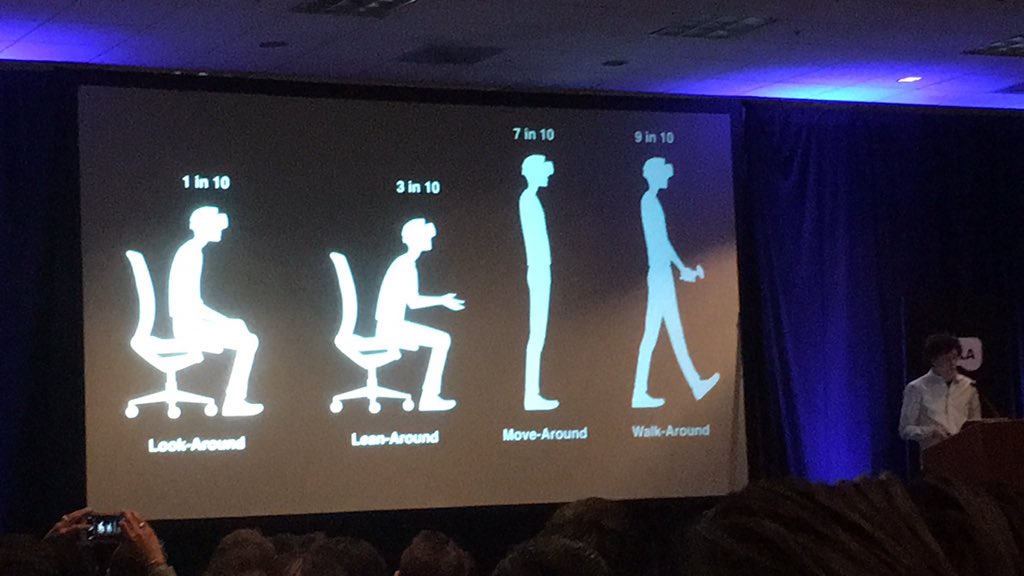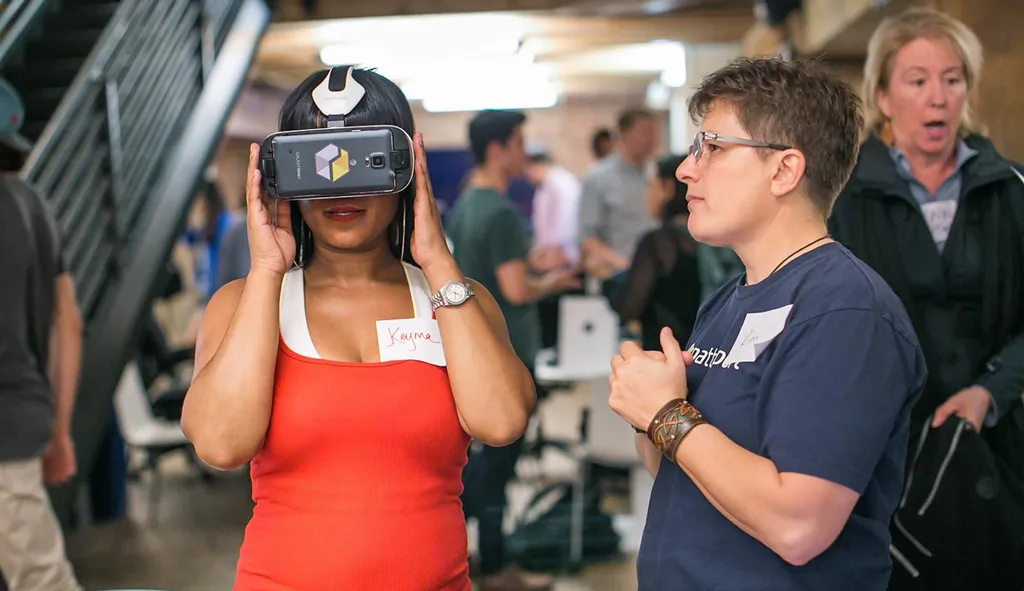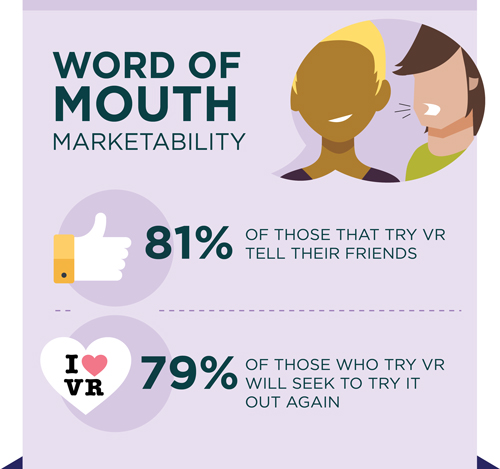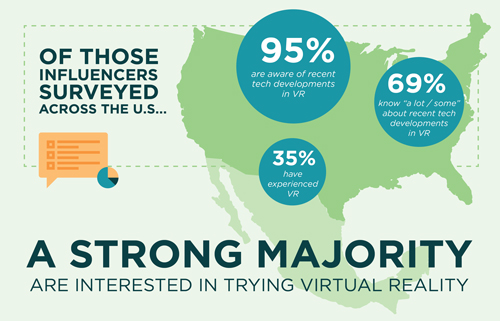“Every Gear VR has been on at least ten heads,” John Carmack, Oculus’ CTO, said at the Game Developers Conference last year.
When he said it, it was a statement that wasn’t necessarily based in fact, but it spoke to the inherent sociability of virtual reality. At the time the Gear VR was still an “Innovator Edition” and enthusiast community was eager to share it with as many people as possibly. Now that consumer hardware is hitting the market it turns out that mentality is translating.
According to a recent research report by Touchstone Research (in partnership with Greenlight VR) 81% of those who try VR plan to tell their friends about it – which is important because despite recent television advertising exposure from Samsung, virtual reality’s path to consumer adoption starts in the grass roots.
It has been said time and time again that you have to experience VR to really get it, and it is true. Trying to showcase VR to someone through a traditional ad is like trying to explain the fourth dimension with a Tesseract, you may give them an idea but there’s no way for them to truly understand without experiencing it (something that is a little bit easier for VR, unless you’re Matthew McConaughey). That’s why we are going to see the return of face-to-face and point of sale advertising, because once you get that first taste you’re hooked. In fact, according to the report, 79% of those who try VR will seek to try it again – an extremely high attach rate.
Oculus and Samsung have already announced that they will be selling the Rift and Gear in retail stores such as Best Buy and Gamestop, giving consumers a destination to be exposed to it for the first time. At TechCrunch Disrupt SF last year, Oculus Head of Product Nate Mitchell stated that “retail is an important part of what [Oculus is] doing” calling out the importance of demo stations in stores specifically – something the company has reaffirmed since. It is likely that HTC and Sony will follow suit with the Vive and the Playstation VR.
And when it comes to exposure to the masses, Google has played a major role as well distributing over a million Google Cardboard devices to consumers across the US. The cheap device may not provide the best experience, but it destroys the competition in distributability (reaching over 5 million so far).

The point is the more people who get a chance to experience VR, the faster its rate of adoption. Out of the 2282 people who responded to the survey 95% were “aware” of the recent developments in the technology, but only 35% had actually tried it. In order for the industry to hit scale, that number is going to have to go up – a lot.
And that is where you come in. Carmack said every Gear VR has been on at least 10 heads, we challenge you to help blow that number up. Those of you who have a VR headset at home, take it out and show it to the world, expose one new person to VR every day from now until the hardware hits the market. The more people we show, the faster the industry will grow.
Check out the full infographic below:





























